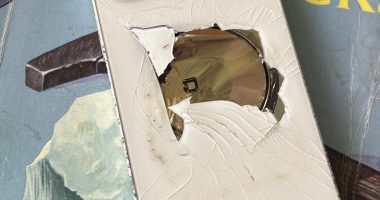RESEARCHERS believe that the Sun is hiding thousands of asteroids from our line of sight.
For decades, scientists have been concerned about hidden asteroids that could potentially pose a risk to Earth.
WHAT ARE ASTEROIDS?
Asteroids are rocky bodies that orbit the sun. And sometimes they are on a path straight toward our planet.
However, because of our atmosphere, these rocks are often destroyed before they can cause much damage to Earth.
Still, some asteroids can get past Earth’s natural defense, as history has shown us.
For example, the Chicxulub asteroid that is credited with killing off the dinosaurs or the Chelyabinsk meteor that hit Russia in 2013.
As a result, some scientists have warned that we could be hit by a
hidden” asteroid at any minute.
Invisible asteroids refer to space rocks we can’t detect due to the glare of the Sun.
“The most problematic object is the one you don’t know about,” Amy Mainzer, a professor of planetary science at the University of Arizona and principal investigator for two NASA asteroid-hunting missions, told Live Science.
“If we can know what’s out there, then we can have a much better estimate of the true risk.”
Most read in News Tech
While researchers do their best to spot dangerous asteroids heading toward Earth, it’s hard to detect what you can’t see.
Moreover, scientists can’t be sure about the actual number of asteroids that could be dangerous to Earth.
Mainzer said that scientists believe they have uncovered around 40% of asteroids measuring more than 460 feet (140 m) in diameter.
“Asteroids the size of the Chelyabinsk meteor strike Earth roughly every 50-100 years,” Richard Moissl, the European Space Agency’s (ESA) head of planetary defense told the Daily Mail earlier this year.
“Injuries caused by airbursts or similar events could be prevented if people are informed of an oncoming impact and its predicted effects,” he added.
“With advance warning, local authorities would be able to advise the public to keep well away from windows and glass,” Moissl continued.
WHAT CAN WE DO?
To better detect asteroids, the ESA plans to soon launch its NEOMIR (Near Earth Object Mission in the Infra-Red) observatory.
NEOMIR will float near the L1 Lagrange point between Earth and the Sun.
“ESA’s upcoming NEOMIR mission will detect asteroids like Chelyabinsk coming from the same region in the sky as the sun,” Moissl said.
This will fill a “vital gap in our current abilities to predict and plan for hazardous impacts,” he added.
Late last year, Nasa also successfully carried out its Double Asteroid Redirection Test (DART) mission.
The mission consisted of a spacecraft smashing into a large asteroid dubbed Dimorphos.
Read More on The Sun
Nasa’s experiment was hoping to solidify a method for protecting Earth from future asteroids.
Nasa Administrator Bill Nelson described the success as a watershed moment for planetary defense and humanity.








